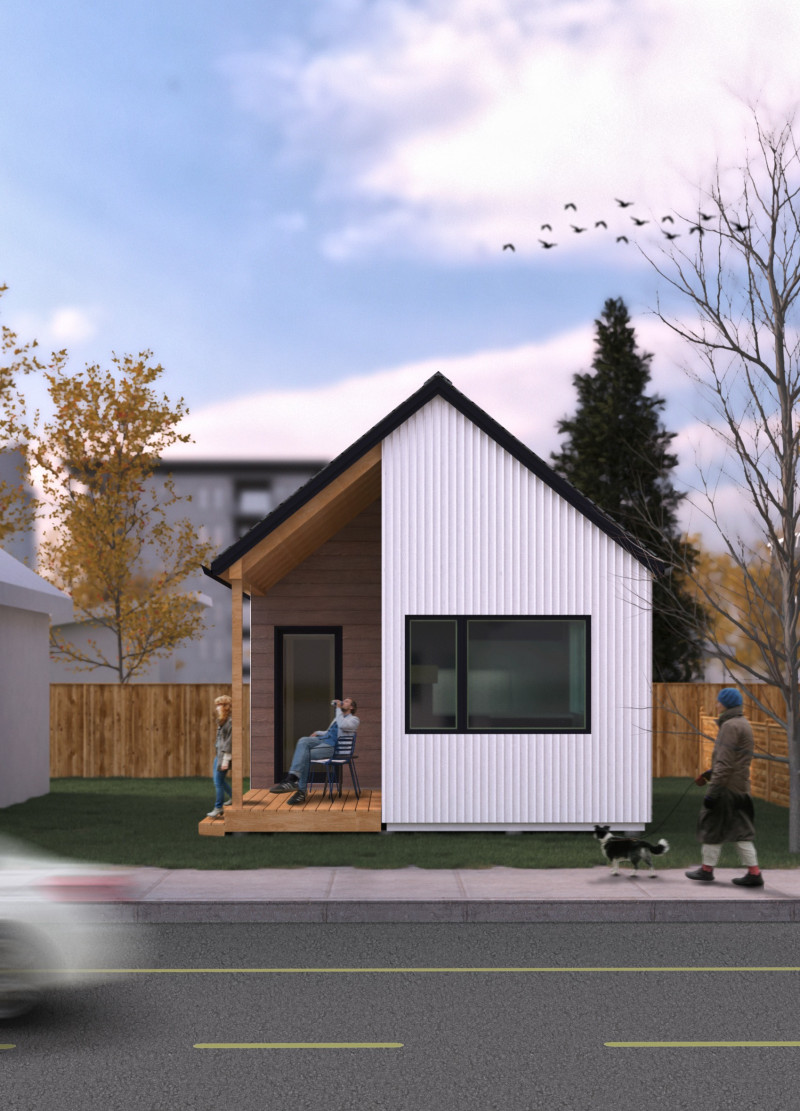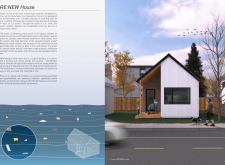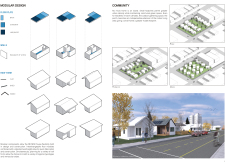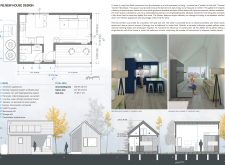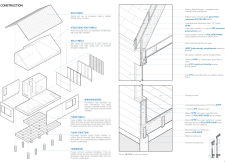5 key facts about this project
Sustainability in Material Selection
One key aspect of the RE:NEW House is its innovative approach to material usage. Constructed primarily from glass-fiber reinforced polymer and high-density polyethylene, the project minimizes reliance on traditional building materials. Nearly 90% of the structure incorporates recycled plastics harvested from ocean waste. This not only reduces environmental impact but also positions the project within broader discussions on sustainability in architecture. The inclusion of modular components allows for versatility in design, making it adaptable to various urban landscapes.
Utility and Community Integration
The RE:NEW House is designed to enhance community interaction while providing essential residential functions. It features distinct areas for living, cooking, and bathing, structured to optimize space and functionality. Notably, the living area offers flexibility with modular furniture, accommodating different lifestyles and personal preferences. The design encourages social cohesion through shared outdoor spaces, reinforcing the importance of community in urban living situations.
Furthermore, the project integrates sustainable engineering elements, such as a photovoltaic system for energy generation and a rainwater collection system for efficient water use. These features underscore the architectural commitment to resource conservation.
The Combination of Modern Aesthetic and Environmental Responsibility
The architectural design of the RE:NEW House brilliantly merges modern aesthetics with sustainable practices. Its gabled roof contributes to effective natural light utilization, while the facade employs a visually dynamic arrangement of recycled materials, presenting a modern appearance that remains approachable. The choice of finishes, including options for corrugated metal or asphalt shingles, also reflects contextual adaptability, allowing the project to resonate with its geographical setting.
This project's unique position within the domain of sustainable architecture not only challenges traditional perceptions of building materials but actively promotes a shift towards environmentally mindful living. By considering the functional, aesthetic, and ecological aspects of design, the RE:NEW House serves as a compelling case study for future architectural endeavors.
For further insights into the RE:NEW House, including architectural plans, sections, and design ideas, readers are encouraged to explore the project presentation in detail. This exploration will provide a deeper understanding of the innovative approaches and technical details that define this project.


